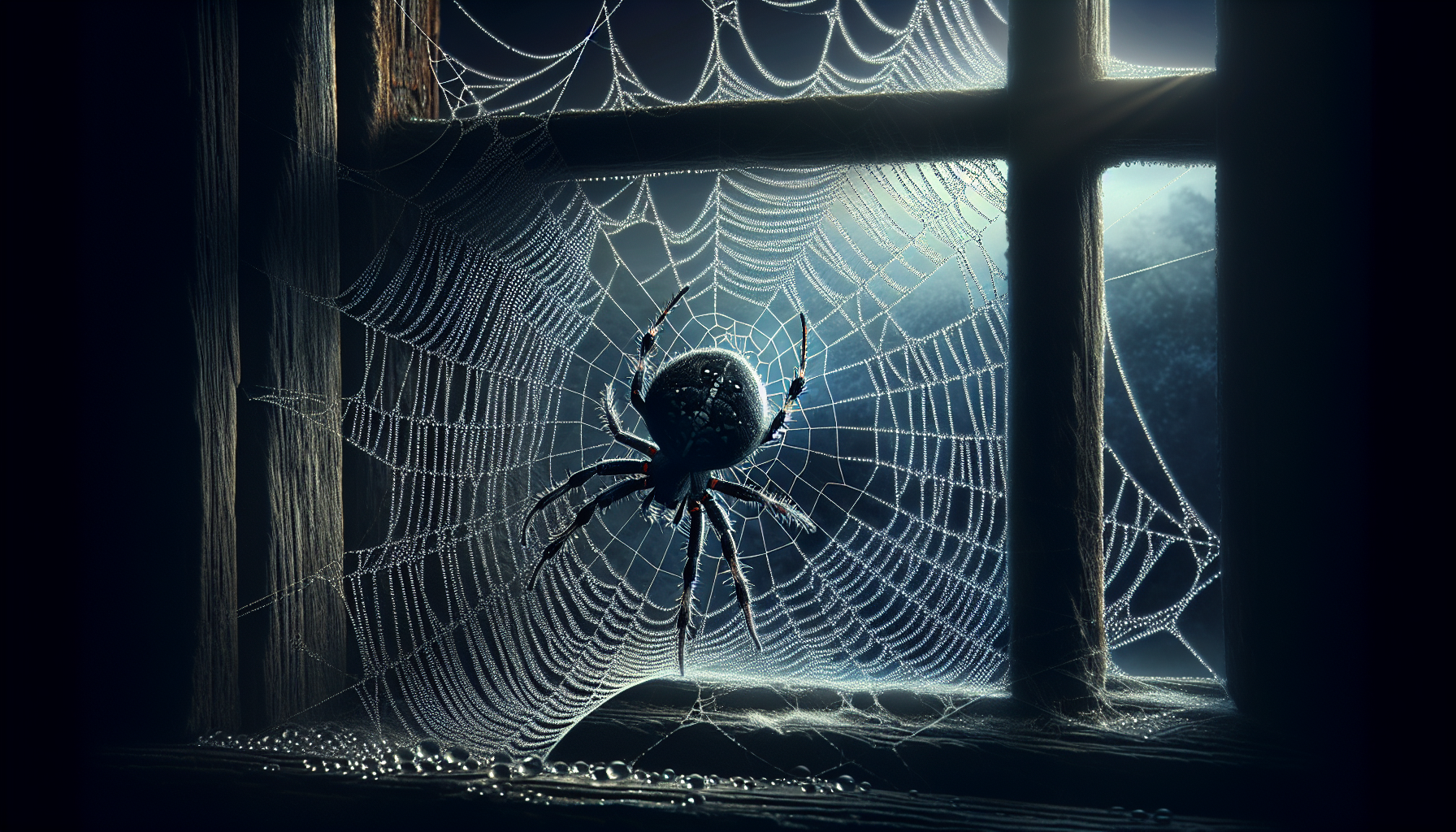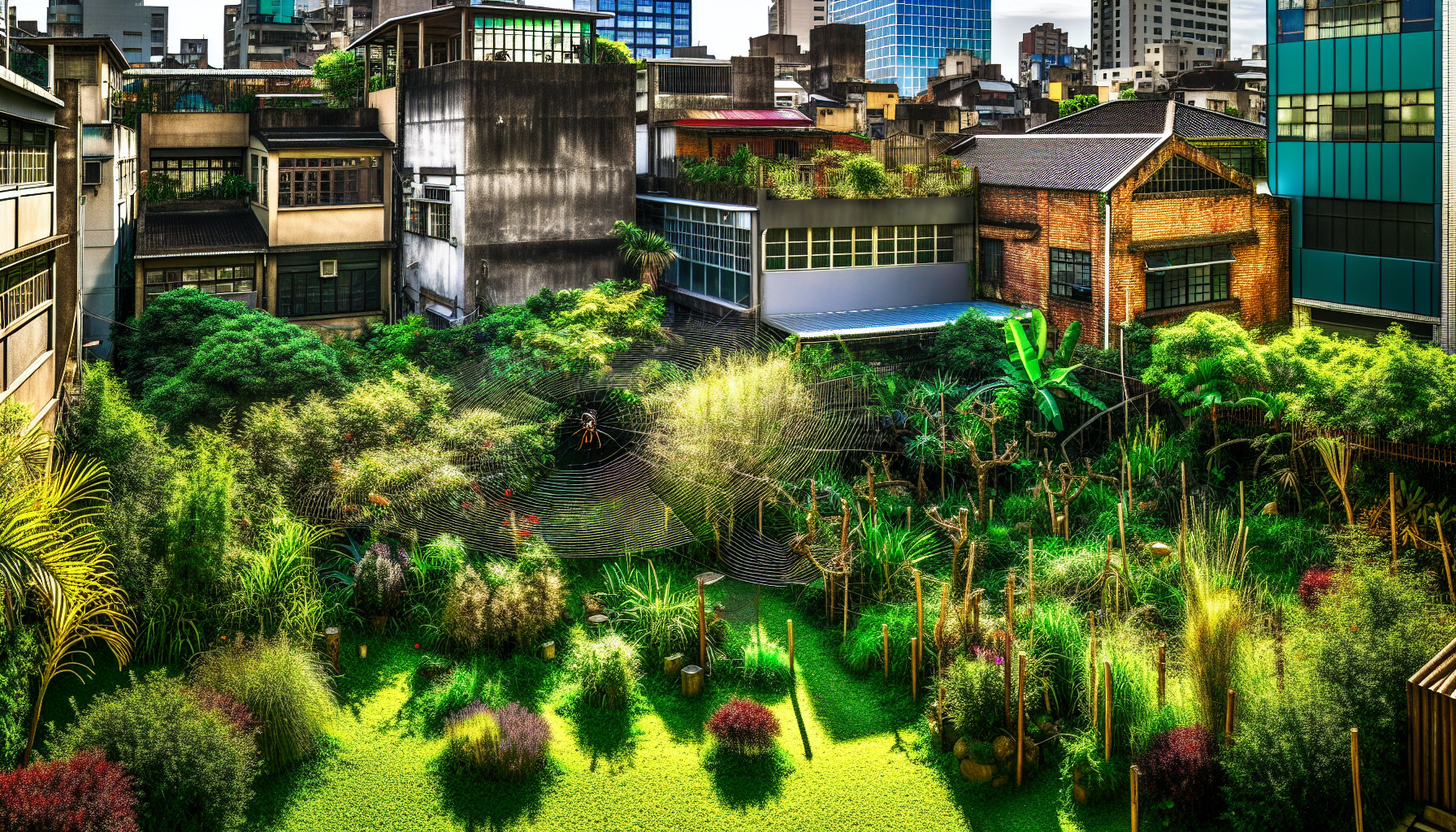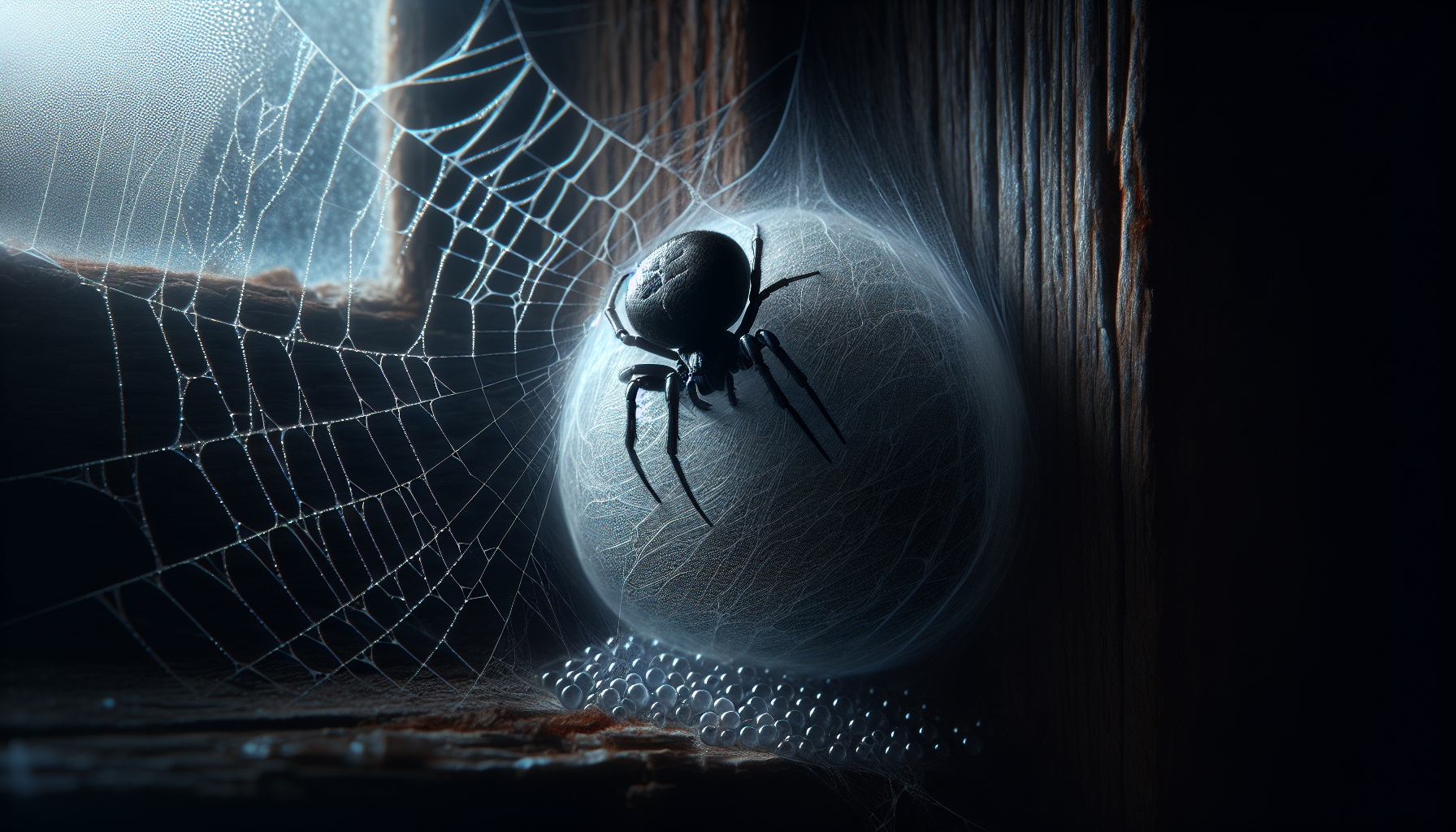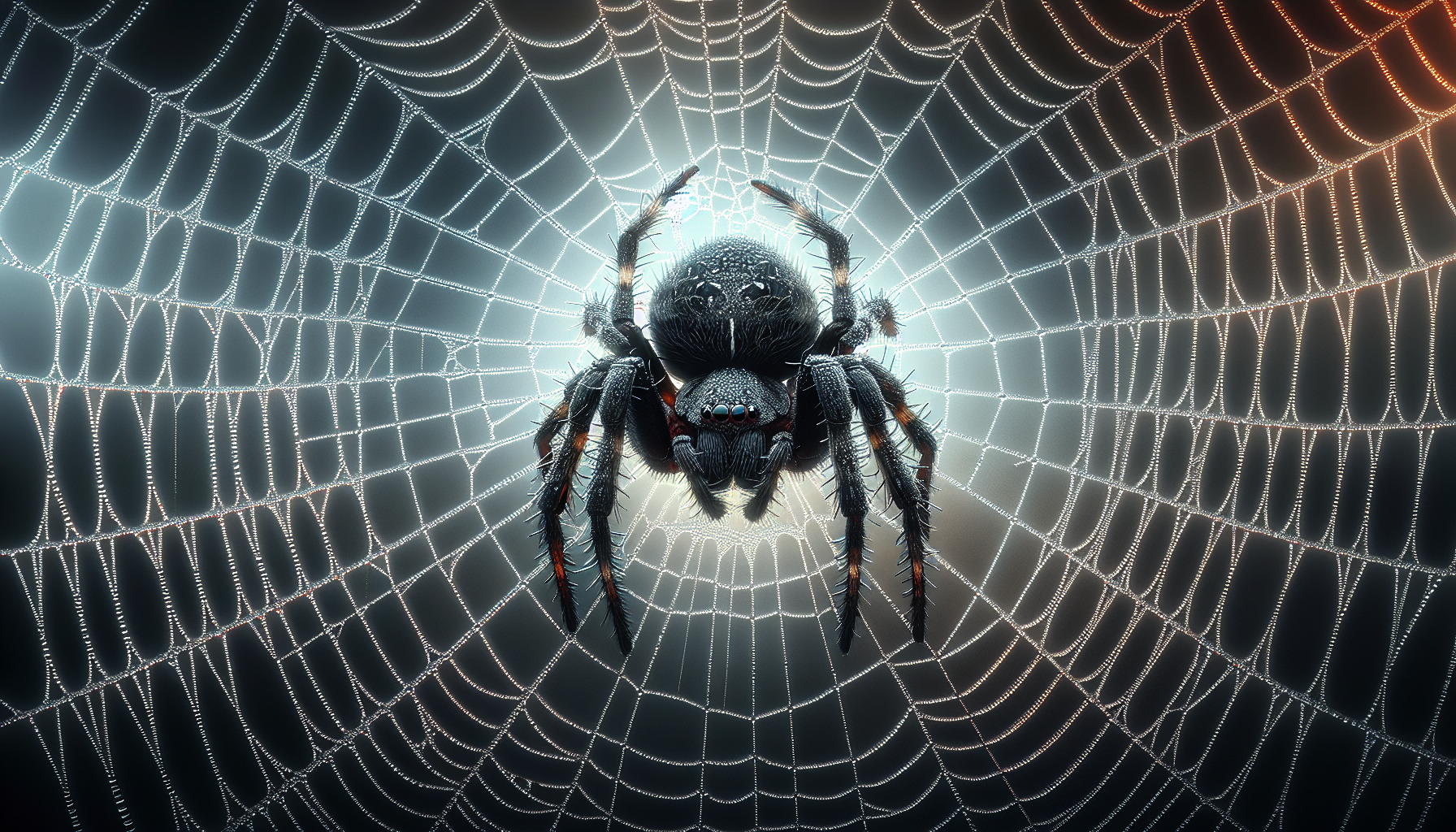Are black house spiders in Canberra a cause for concern? These common arachnids are familiar sights in and around homes but are often misunderstood. This article reveals the truth about their venom, how to identify them, and why they might not be the unwelcome guests you fear. Learn to recognize, prevent, and manage encounters with black house spiders in Canberra, ensuring you and these eight-legged locals maintain a safe coexistence.
Key Takeaways
-
The Black House Spider, or Badumna insignis, is a robust, dark-coloured spider common in Canberra’s urban and natural environments. It is distinguishable by its body length, colouration, and pattern; its adult body size ranges from 1 to 1.5cm.
-
This species is known for its adaptability. It can live on tree trunks, rock walls, gardens, bushlands, and urban structures such as window frames, where it attracts prey with light sources and contributes to ecological balance by preying on insects.
-
Black House Spiders are venomous but pose minimal danger to humans. Their bites cause short-term pain and discomfort rather than serious health risks. Prevention and management of infestations can be achieved through natural methods like planting specific plants and sealing crevices or by using brooms, vacuums, and natural repellents.
Black House Spider Canberra: Species Overview

The Black House Spider, scientifically known as Badumna insignis, is easily recognizable by its dark, robust body adorned with visible grey hairs and round abdomen. With females larger than males, reaching body lengths of 1-1.5cm, they can be easily distinguished from other spiders, such as redback or mouse spiders. Their dark brown to black carapace and legs and charcoal grey abdomen marked with light patterns create a unique appearance that sets them apart in the spider identification chart based on body length.
However, it’s crucial not to confuse them with the infamous Sydney funnel-web spider or the male mouse spider, which are more venomous. Likewise, they differ from the huntsman spiders, known for their size and speed, and the orb-weaving spiders, famous for their intricate web patterns. It’s essential to be aware of these venomous spiders and their characteristics.
The Natural Habitat of Black House Spiders

Black House Spiders are versatile creatures, adapting to a variety of habitats. They are commonly found inhabiting:
-
Tree trunks
-
Logs
-
Rock walls
-
Building structures
They are drawn to light sources that attract their small insect prey.
Unlike the burrow-loving mouse spiders, the Black House Spider thrives in both urban and natural environments, making it a frequent encounter for Canberra residents, as opposed to the less commonly seen St Andrews Cross Spiders, which include the St Andrews Cross Spider.
Urban Areas and Buildings
In urban areas, Black House Spiders often establish their webs in the following locations:
-
Window frames
-
Verandas
-
Sheds
-
Fences
These structures provide access to light sources, attracting smaller prey like flying insects. Their ability to blend into their surroundings and their preference for less disturbed areas make their presence in homes non-intrusive yet noticeable.
Whether it’s a residential home or an office building, these spiders inhabit structures resembling their natural habitat, indicating their adaptability and resilience.
Gardens and Bushlands
Stepping outside the urban domain, Black House Spiders find comfort in the darkness and moisture of gardens and bushlands. These areas provide ample opportunities for web construction, particularly around tree trunks and rock walls. Urban structures such as window frames within these settings further encourage their habitation.
These spiders play a significant ecological role as they help regulate the population of insects and small invertebrates in these environments. Their presence might also indicate a balanced, thriving ecosystem, as they share their habitat with other spider species like the hunting wolf spiders.
Tree Trunks and Rock Walls
Tree trunks and rock walls offer the Black House Spider a habitat that caters to their needs. The presence of crevices and spaces in these structures provides shelter and aids in constructing their elaborate webs. These environments also attract smaller insects, which the spiders prey upon.
Whether on the bark of a tree or in a crevice in a rock wall, these spiders find their homes in various niches within Canberra’s abundant natural and urban settings.
Life Cycle and Reproduction of Black House Spiders

Just like any other living creature, the Black House Spider goes through multiple stages in its life cycle, transforming from an egg to a spiderling and then to a juvenile before becoming an adult. The female spider, larger and more venomous than its male counterparts, constructs several white silk egg sacs, securing them within its web retreat. Unlike the wolf spider, which carries its egg sacs attached to its body, the Black House Spider leaves its sacs in the web.
These spiders have an average lifespan of approximately two years, with males typically reaching sexual maturity at about four years and females at five. Over her lifetime, a female Black House Spider can lay more than 4,000 eggs, contributing to the species’ robust presence in Canberra.
Web Structure and Hunting Techniques

The Black House Spider’s web is a testament to its ingenuity. Using cribellate silk, these spiders construct intricate, tangled webs with a dense, funnel-like shape designed to trap insects. Their webs can be seen in various locations, from tree trunks to window frames, a testament to their adaptability.
Their hunting techniques are equally impressive. From ambush tactics to elaborate silk snares, they have honed their skills to capture prey efficiently. Capable of blending into their surroundings and detecting the vibrations of trapped prey on their web, they are formidable hunters in their own right.
Venomous Bites and Medical Implications

While the Black House Spider is venomous, its bite is typically nonfatal, causing severe local pain but posing no significant danger to humans. Symptoms of an edge may include:
-
profuse sweating
-
muscular pains
-
vomiting
-
headaches
-
breathing difficulties
-
facial swelling
-
drooling
-
localized swelling around the bite area.
In the event of a bite, it’streating it as a medical emergency is crucial. Applying a cold pack to the affected area and seeking medical attention promptly can help manage the pain and prevent complications. Rest assured, there have been no documented long-term effects of a Black House Spider bite.
Coexisting with Black House Spiders: Benefits and Risks
Despite the initial fear they might inspire, coexisting with Black House Spiders has benefits. These spiders play a vital role in pest control, preying on common pests and reducing the need for chemical pesticides. They also contribute to ecosystem balance by regulating the populations of other spiders and insects.
However, the risks cannot be ignored. While they’re generally shy and avoid human interaction, their bites can cause significant discomfort. Also, the use of pesticides to manage their population could potentially harm other organisms within the ecosystem.
Preventing and Managing Black House Spider Infestations
For those who’d instead not share their space with these spiders, there are natural ways to prevent infestations, such as planting spider-repelling plants like Eucalyptus, Lemon Balm, Lavender, and Mint. Sealing all cracks, gaps, and crevices around the house can also reduce their entry points.
In the event of an infestation, here are some methods you can use to eliminate spiders:
-
Use a vacuum or broom to remove spiders, webs, and eggcases
-
Use natural repellents like peppermint oil, cinnamon, and vinegar to deter spiders
-
Use insecticides specifically formulated for spiders, but use them responsibly
These methods can help you effectively deal with a spider infestation.
Other Common Canberra Spiders
While the Black House Spider might be a frequent guest in Canberra homes, it’s not the only spider species residents might encounter. Other common spiders include the venomous Redback and Funnel-Web Spiders, the impressive Huntsman spiders, and the intricate web-weaving Orb-Weaving Spiders.
These spiders share the Black House Spider’s habitats, including:
-
Tree trunks
-
Rockeries
-
Fence posts
-
Letter-boxes
Each species contributes to Canberra’s rich and diverse arachnid community, each playing its role in the ecosystem.
Summary
From its distinctive appearance and intricate web structures to its hunting techniques and ecological roles, the Black House Spider is a fascinating creature. As we coexist with these spiders, we must appreciate their contribution to our ecosystem and manage their presence responsibly. Let’s remember that every animal, no matter how small or seemingly insignificant, has a role in the intricate web of life.
Frequently Asked Questions
What spiders are in Canberra?
The redback, wolf spider, huntsman, black house spider, mouse spider, white-tailed spider, and funnel-web are commonly found in Canberra. It’s essential to be cautious, especially around small children. ACT Pest Control offers various spider pest control services in Canberra.
Are there poisonous spiders in Canberra?
The only confirmed dangerous spider in Canberra is the redback spider, which is highly venomous. Other spiders may be somewhat venomous, but the redback is the only fully confirmed dangerous one.
What should I do if I get bit by a black house spider?
If a black house spider bites you, wash the area with soap and water, apply a cold pack, and seek medical attention if severe symptoms develop. It’s essential to treat the bite as a medical emergency and call for an ambulance if needed.
How can I identify a Black House Spider?
You can identify a Black House Spider by its dark, robust body, black rectangular head and thorax, and round abdomen. The female is typically larger than the male, measuring 1-1.5cm in body length.
How can I prevent a Black House Spider infestation?
To prevent a Black House Spider infestation, plant spider-repelling plants like Eucalyptus, Lemon Balm, Lavender, and Mint around your house and seal all cracks, gaps, and crevices. This will help keep the spiders away.


